1. Spinach

Spinach was discovered in Iran over 1,000 years ago.
©nesavinov/Shutterstock.com
The roots of Popeye’s favorite veg are ancient. According to food historians, it was discovered as a wild plant growing near Iran’s Great Salt Desert over a millennia ago. The ancient Persians then gathered the plant, grew it in their gardens, and fed it to their cats. Somewhere around the 6th century, spinach found its way to China, and from China to the Indian subcontinent. Eventually, the Moors brought it west to Spain. Its common name is an Anglicization of spanacha, a word that means Spanish greens. In Persian, the more romantic name of the vegetable is isfanakh, or green hand.
Spinach still isn’t as popular as it should be and is the epitome of a vegetable that’s eminently healthful but distasteful. This is probably because spinach grows best in sand, which is often discovered even after the vegetable makes it to the dinner table. However, its health benefits are manifold. This green, leafy vegetable is rich in iron and abundant in vitamin A, calcium, and potassium. On top of this, its calorie count is low. A cup of raw spinach has less than 15 calories and a cup of cooked spinach has about 40 calories. Use spinach in stir-fries, cream it, toss it in salads, turn it into a soufflé, or create a savory meal like Greek spinach triangles with phyllo dough.
2. Sweet Potato

The sweet potato isn’t related to the potato but is a relative of the morning glory.
©Angelika Heine/Shutterstock.com
Sweet potatoes aren’t potatoes but are in the same family as the morning glory. But like real potatoes, sweet potatoes are native to the warmer climates of the Americas. The leaves and tender shoots are edible, while the leaves and shoots of potatoes are poisonous.
The flesh of the sweet potato can be orange, yellow, or gold. Orange sweet potatoes tend to be sweeter and are used in desserts such as sweet potato pie. Sometimes they’re called yams, but sweet potatoes and true yams aren’t related.
Beta-carotene gives an orange sweet potato its color, and this compound is turned into Vitamin A after the sweet potato is eaten. The sweet potato is also rich in Vitamin C, the B vitamins, potassium, and manganese. Besides being baked into pies and candied, you can mash sweet potatoes, use them as crisps, make them into soups, and use them in savory dishes such as Madrasi kari.
3. Shallot

These vegetables that start with S are milder types of onion.
©iStock.com/A_M_Radul
Shallots are a type of onion. They’re usually used as aromatics, though they can be deep fried or pickled. The taste of shallots is sweeter and more delicate than other onions, but they have a shorter shelf life and should be used pretty soon after they’re bought. Though some people use them interchangeably with onions, you should try to only use shallots in recipes that call for them. These often oval-shaped little onions are good sources of Vitamin B6, Vitamin C, and manganese.
4. Spaghetti Squash
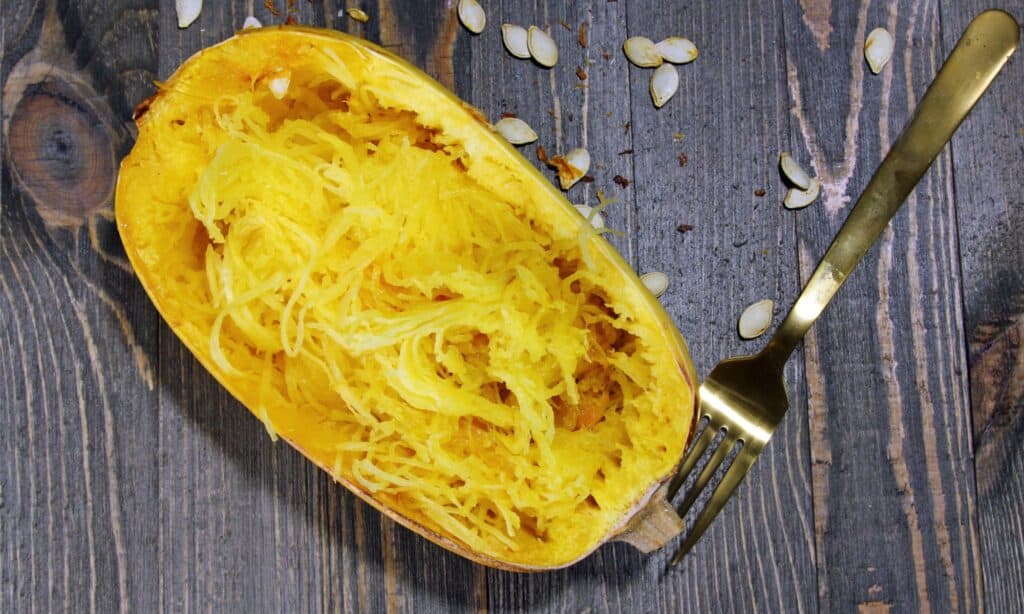
Open up this vegetable that starts with S, and you find pasta!
©iStock.com/DipaliS
This yellow, orange, or ivory football-sized squash has a surprise when it’s cooked and then opened. Take a fork to the pulp, and it comes away in spaghetti-like strings. Indeed, spaghetti squash is often used as a substitute for regular long pasta. Its seeds, which are numerous and large, are also edible, and you can roast them like pumpkin seeds. Spaghetti squash can be baked, boiled, steamed, or put in the microwave for a few minutes. It is rich in nutrients such as Vitamin B5, Vitamin B6, manganese, and beta-carotene. It’s also low in fat and low in calories.
5. Scallion
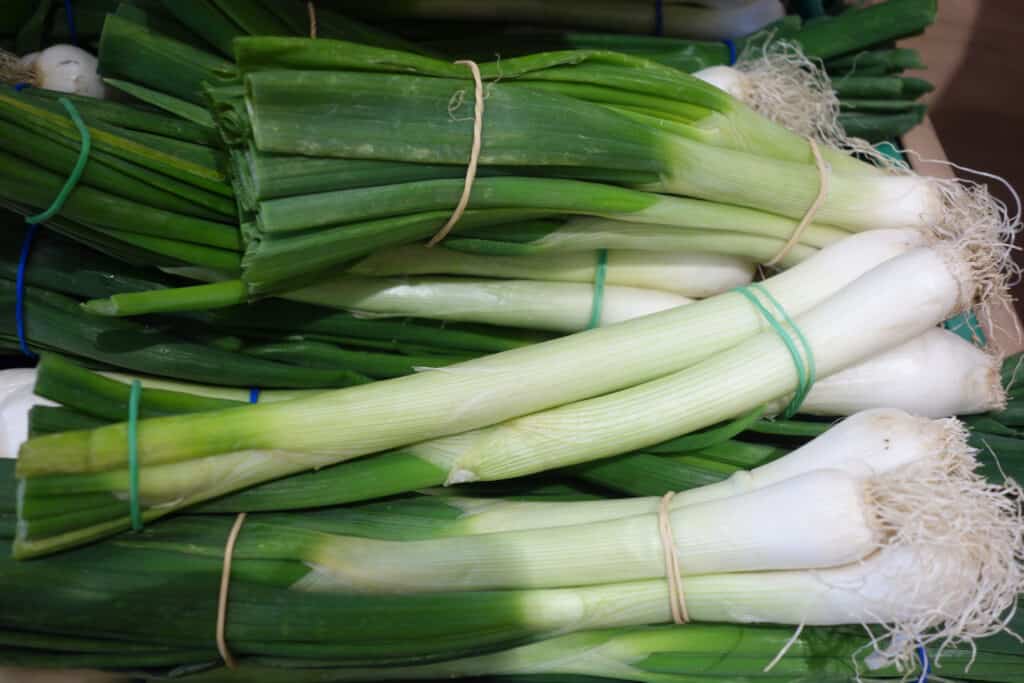
Scallions have a mild taste, and the green tops can be used in place of chives.
©iStock.com/Elmar Gubisch
Also called green or spring onions, scallions are regular onions but are pulled up very early, when the base is still slender. Then, they’re bunched together. Scallions have a mild taste and are often sprinkled raw over cooked dishes and salads. In cooking, they’re used when regular onions would overpower a dish. The green tops can be substituted for chives.
6. Swiss Chard

This vegetable that starts with S can have red, white or yellow stems.
©PatrikStedrak/iStock / Getty Images Plus via Getty Images
Like many other leafy green vegetables, this biennial plant is high in nutrients. A relative of the beet, you can tell it from other vegetables by its large stems, which can come in shades of red, white, or yellow. The crinkly leaves can be green or red. Swiss chard is rich in beta-carotene, Vitamin C, and Vitamin E. It gives you a whopping 321 percent of the daily value for Vitamin K, a vitamin crucial to blood clotting. Other nutrients that are abundant in Swiss chard are iron, magnesium, and manganese.
You can eat Swiss chard raw, though the leaves and stem might be bitter. Toss it in salads, stir-fry it, or put it in soups. Cooking softens the bitterness a bit.
7. Serrano Pepper
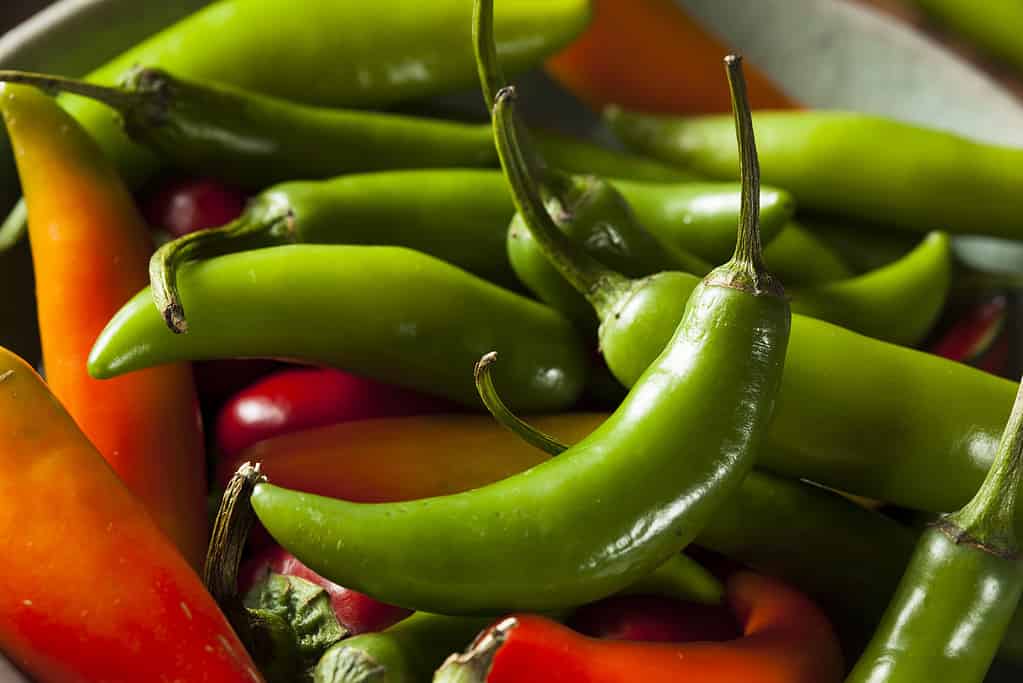
Despite how hot they are, Serrano peppers are traditionally eaten raw.
©bhofack2/iStock via Getty Images
These hot peppers come from Mexico and get their name from the local mountains, or sierras. Like other peppers, Serranos aren’t really vegetables but fruits that are used as vegetables. They are actually berries, and though they are bitingly hot, with a Scoville rating of between 10,000 and 25,000, they are traditionally eaten raw. They’re also used to make salsa.
8. Sea Kale
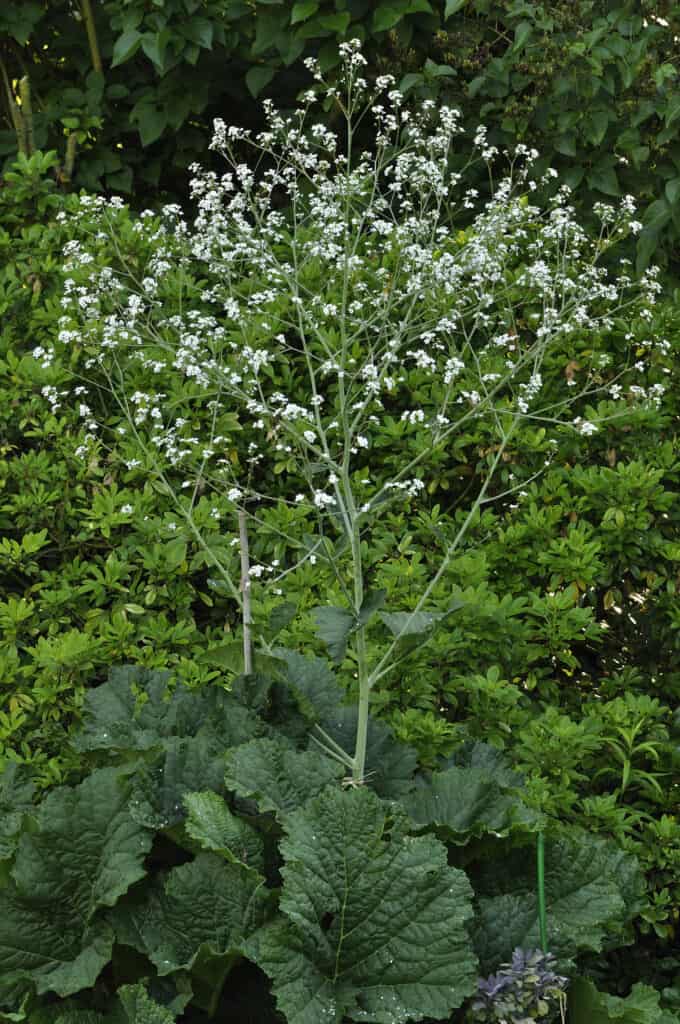
The stems of this vegetable that starts with S are often white because they’re usually buried in beach sand.
©COULANGES/Shutterstock.com
Sea kale is a brassica that’s a member of the cabbage family. Also called crambe, it grows along the coasts of the United Kingdom, Eastern Europe, and Turkey. Because beach sand collects around the stems, they are white when the plant is harvested. The leaves are pale yellow and edged with purple. Sea kale is wrapped in dark tissue paper immediately after it’s picked, for sunlight both darkens it and destroys its flavor. It’s traditionally boiled in seawater or can be eaten raw. Sea kale is served much like asparagus and is sometimes drizzled with hollandaise sauce.
9. Savoy Cabbage
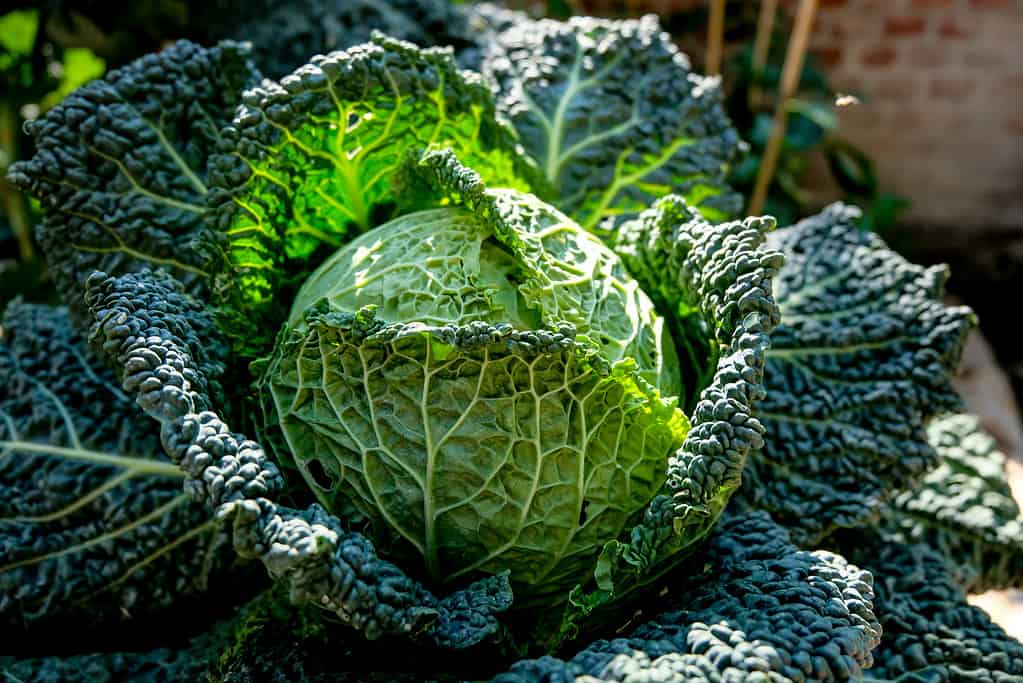
Unlike regular cabbage, Savoy cabbage doesn’t get mushy after it’s cooked for a while.
©Vito Cangiulli/Shutterstock.com
Full of beautiful, crunchy wrinkles, this cabbage is named for France’s Savoy region. It tastes just like “regular” cabbage, but it retains its firmness even as it’s cooked. This is desirable in soups and stews, sauerkraut, and kimchi. It’s excellent in recipes that call for meats to be rolled up in cabbage leaves, as Savoy cabbage leaves are less likely to tear.
Savoy cabbage can be a bit challenging to grow since it’s subject to attack by pests and diseases, but it’s very winter hardy. Like other cabbages, Savoy cabbage is full of nutrients, especially Vitamin C, Vitamin K, folate, and Vitamin B6.
10. Sunchoke
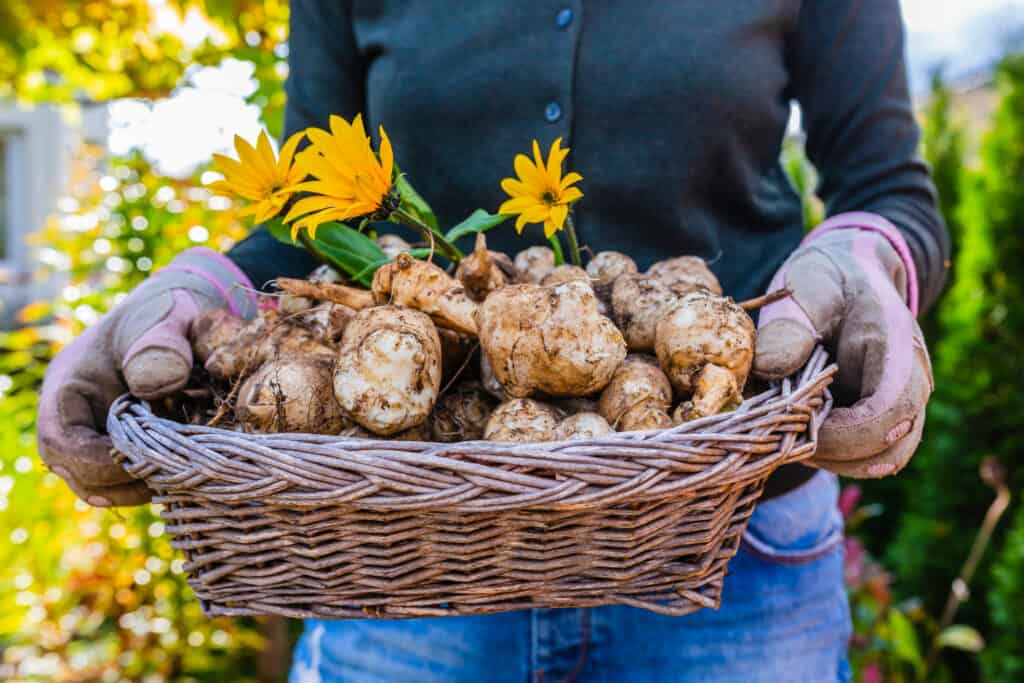
Sunchoke tubers resemble ginger roots.
©iMarzi/Shutterstock.com
Also called the Jerusalem artichoke, the sunchoke is neither an artichoke nor is it from Jerusalem. It is in fact native to North America. Though the plant eventually produces a pretty, yellow sunflower, it’s the tuber that is eaten. These tubers resemble knobby ginger or galangal roots, and they can be white, golden brown, purple, or red. People eat sunchokes raw or cooked, and some people pickle them. The texture of the sunchoke is described as crunchy, and if it’s stored for a while, it has a sweet taste, as its carbohydrates have had time to convert to sugar.
As its name suggests, the overall taste of the sunchoke resembles that of the artichoke when the tuber is cooked. It has good amounts of thiamine, iron, phosphorus, and the carbohydrate inulin. Inulin isn’t broken down in the intestines like other carbs, so doesn’t cause a spike in the glycemic index. This makes the sunchoke a good choice for people with diabetes.
11. Snow Peas

Use this vegetable that starts with S in stir-fries.
©bigacis/Shutterstock.com
Snow peas are prized for the taste and texture of their edible pods. Though other peas have edible pods, the pods of snow peas are especially thin. In spite of their name, snow peas aren’t grown any later in the seas than other types of peas. They are famously used in stir-fries and hold on to their crispness after being cooked. Their leaves and stems are also stir-fried and enjoyed. Snow peas are good sources of the B vitamins, iron, and manganese. They’re also a very good source of Vitamin C and Vitamin K.
12. Sorrel
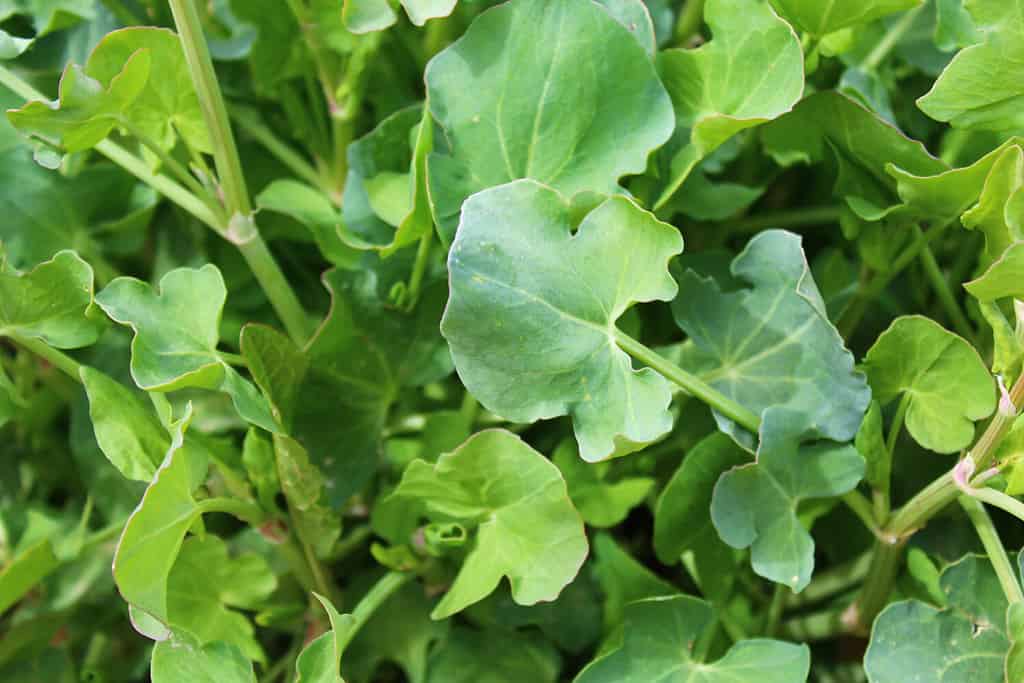
Sorrel is dioecious, meaning it has male and female plants.
©Martina Unbehauen/Shutterstock.com
The pleasantly sour taste of sorrel makes it ideal for salads and soups. In the garden, sorrel has rosettes of long, arrow-shaped leaves, the upper ones embracing the stem. Sorrel is also a perennial, thrives in poor soil, and has male and female plants. Sorrel is native to Europe.
Nutritionally, sorrel is very rich in Vitamin A, Vitamin C, iron, magnesium, and manganese. It also has a lot of oxalic acid. This compound can be toxic in large doses and can cause kidney problems. Be careful about ingesting too much sorrel if you have kidney disease.
13. Salad Burnet

Use the leaves of salad burnet when they’re still young and tender.
©Simone Andress/Shutterstock.com
This long-lived plant is native to much of Europe, Siberia, Western Asia, and Northern Africa, and has volunteered in much of the rest of the world. Besides being a delicious vegetable, it is an attractive plant, with clusters of unusual red flowers and fernlike evergreen or semi-evergreen foliage.
The leaves of salad burnet are used in salads when they are still young and tender. The vegetable can also be used as an herb and added to butter and drinks. People describe the flavor as similar to cucumber or mint, and young leaves can be substituted for mint.
14. Salsify
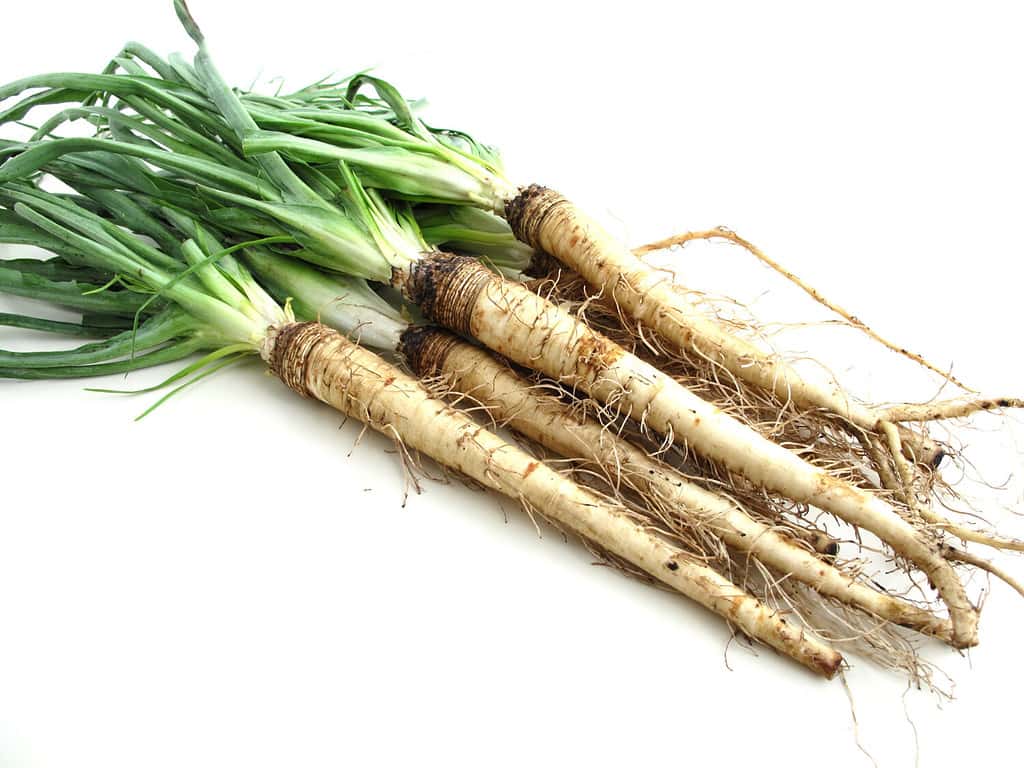
Two types of salsify are common salsify and black salsify.
©Joseph J. Erdos/Shutterstock.com
There are two types of salsify used as vegetables. They’re purple or common salsify and black salsify. You can eat the roots, leaves, and young shoots of common salsify. The leaves can be eaten raw, but the roots and shoots need to be boiled first. Common salsify is grown in the garden much like carrots and parsnips are. Frost makes the roots taste better, and so the plant is harvested after a frost but before it flowers. Flowering makes the root stringy, tough, and unpalatable. Common salsify is a good source of riboflavin, Vitamin B6, Vitamin C, manganese, and phosphorus.
Black salsify, also called scorzonera is not in the same genus as common salsify though they’re in the same family. It’s from the south of Europe and the Middle East. It gets its name because its long taproot has a black, corky layer that you need to peel before you eat it. Also, when the roots are cut, they exude a milky latex that turns them black.
The root is best eaten when it’s young and has something of a carroty taste. On the other hand, it’s served much like asparagus and goes well with a white sauce. You can also eat the shoots and flowers, whether they’re raw or cooked. There’s even a type of candy made from black salsify called the scorzonera sweet. Black salsify is nutritious and is rich in calcium, iron, potassium, phosphorus, Vitamins A, C, E, and thiamine. Like the sunchoke, black salsify contains inulin and is a good choice for diabetics.
15. Snake Gourd
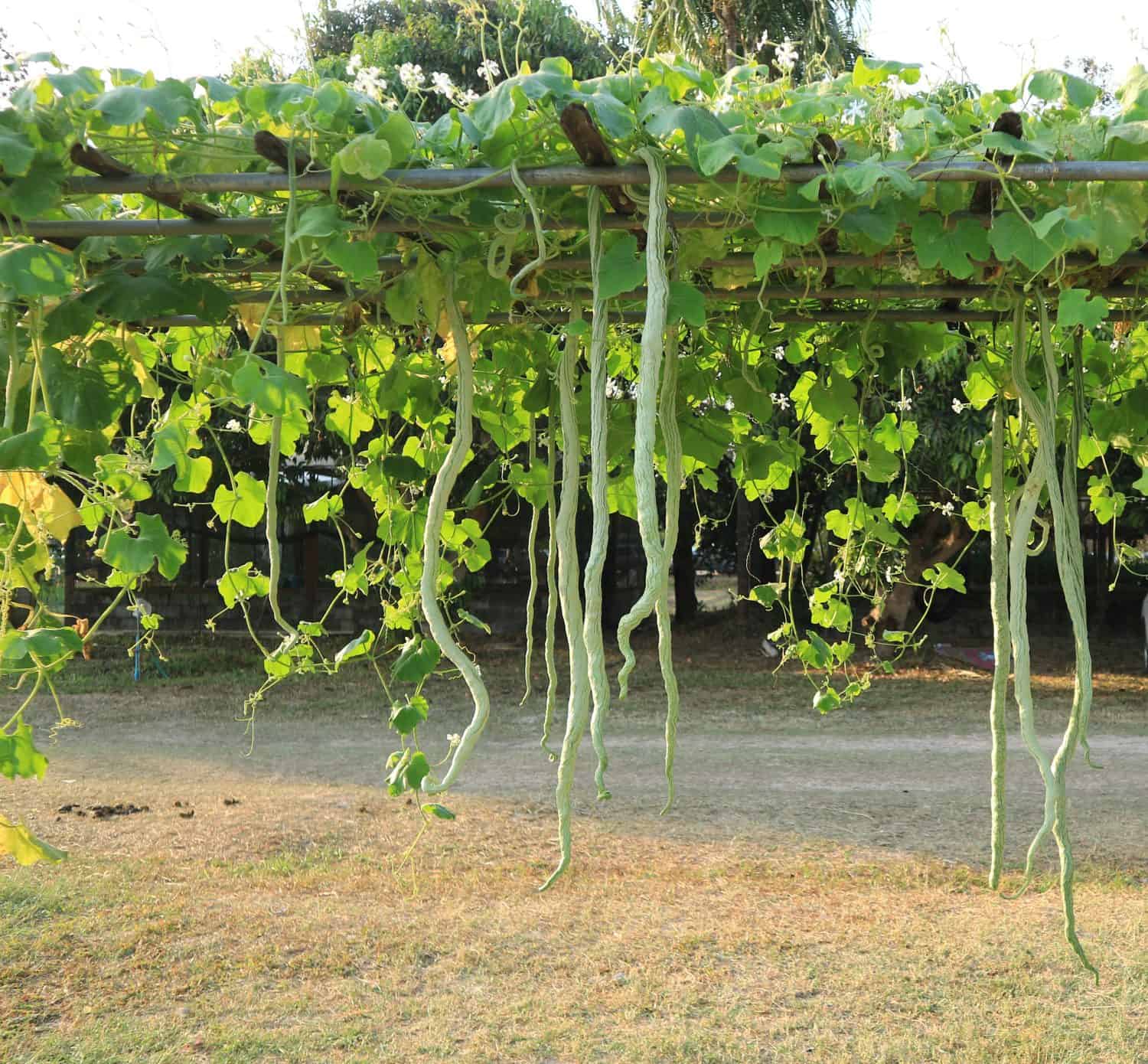
This gourd gets its name from the shape of its fruit, which looks like a snake and can grow to over 6.5 feet long.
©litle_devil/Shutterstock.com
Snake gourd, which is actually a fruit, gets its name because it looks like a long and sinuous snake hanging from a vine. It’s found wild in South and Southeast Asia and is now found in Florida, some African countries, and northern Australia. The gourd needs to be eaten when it’s white and immature, for it is too tough and bitter to eat when it’s mature. Even a young snake gourd has an off-putting smell and is bitter to eat when it’s raw. These go away after the vegetable is cooked. The plant’s tendrils, shoots, and leaves are also edible and cooked as greens, and a mature, red gourd has a pulp that people sometimes use instead of tomatoes.
16. Shepherd’s Purse

This vegetable that starts with S is considered a weed in some places.
©jgdanwoo/Shutterstock.com
This vegetable gets its name because of the shape of its fruits, which are flat, shaped like triangles and resemble a purse. Though it’s native to Asia Minor and Eastern Europe, shepherd’s purse is now so prevalent in other parts of the world that it’s considered a weed. It especially likes to populate disturbed areas such as abandoned fields.
Shepherd’s purse has many uses, including use as a food. The young leaves are eaten raw, and Native Americans made a drink from it. It is especially popular in Asia where the leaf is stir-fried, used to stuff won tons, or used in a soybean paste soup or in congee, a type of rice porridge popular in Asia.
17. Snap Peas
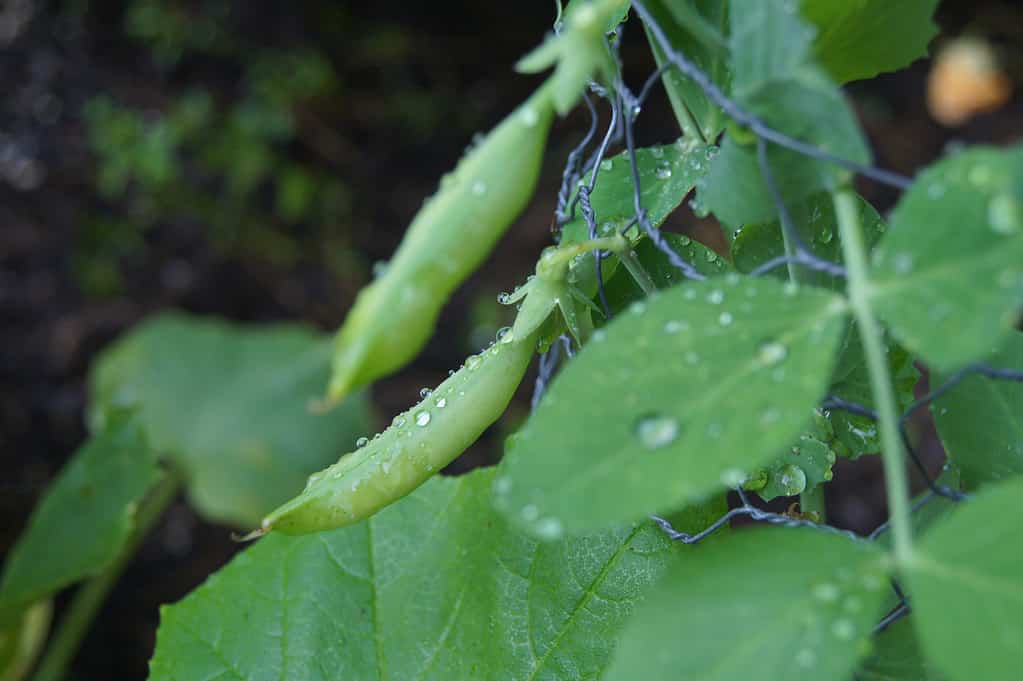
The pods of snap peas are edible but tougher than the pods of snow peas.
©iStock.com/PierceHSmith
Like the snow pea, the snap pea, or sugar snap pea has an edible pod, though this pod is thick and round and is best eaten when it’s young. Each pod of the climbing plant has three to nine peas.
Besides being eaten mange-tout, the peas can be released from their pods and served in all manner of dishes, from soups to salads to casseroles and stews. Mature pods may need to be “unzipped” before the peas can be released. Snap peas have good amounts of Vitamin B5, Vitamin B6, Vitamin C, Vitamin K, iron, and manganese.
18. Skirret
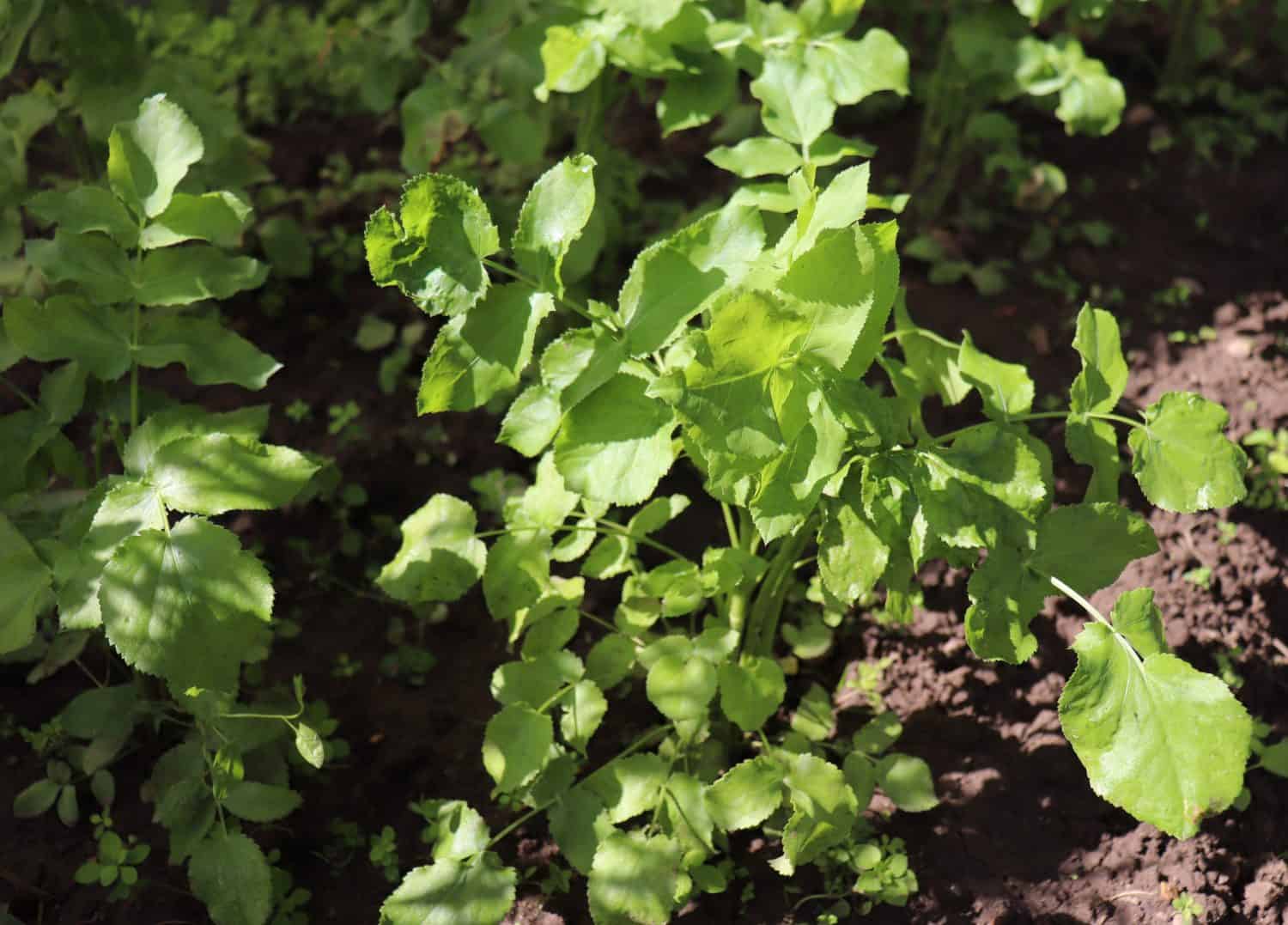
The roots of skirret are used much like parsnip.
©avoferten/Shutterstock.com
The roots of this perennial plant are also used the way salsify and parsnip are used. You can tell the roots of the skirret plant from the others because they are white, have a lovely fragrance, and have a notably sweet taste. Skirret is an ancient vegetable, and though it’s native to China, it was known in ancient Rome and possibly mentioned by Pliny the Elder.
The skirret root is best eaten during the winter while the plant is dormant. As it “wakes up” in spring the root becomes hairy, fibrous and tough. If the core is woody, take it out before cooking. Skirret is rich in zinc, B vitamins, and Vitamin C.
19. Sea Asparagus
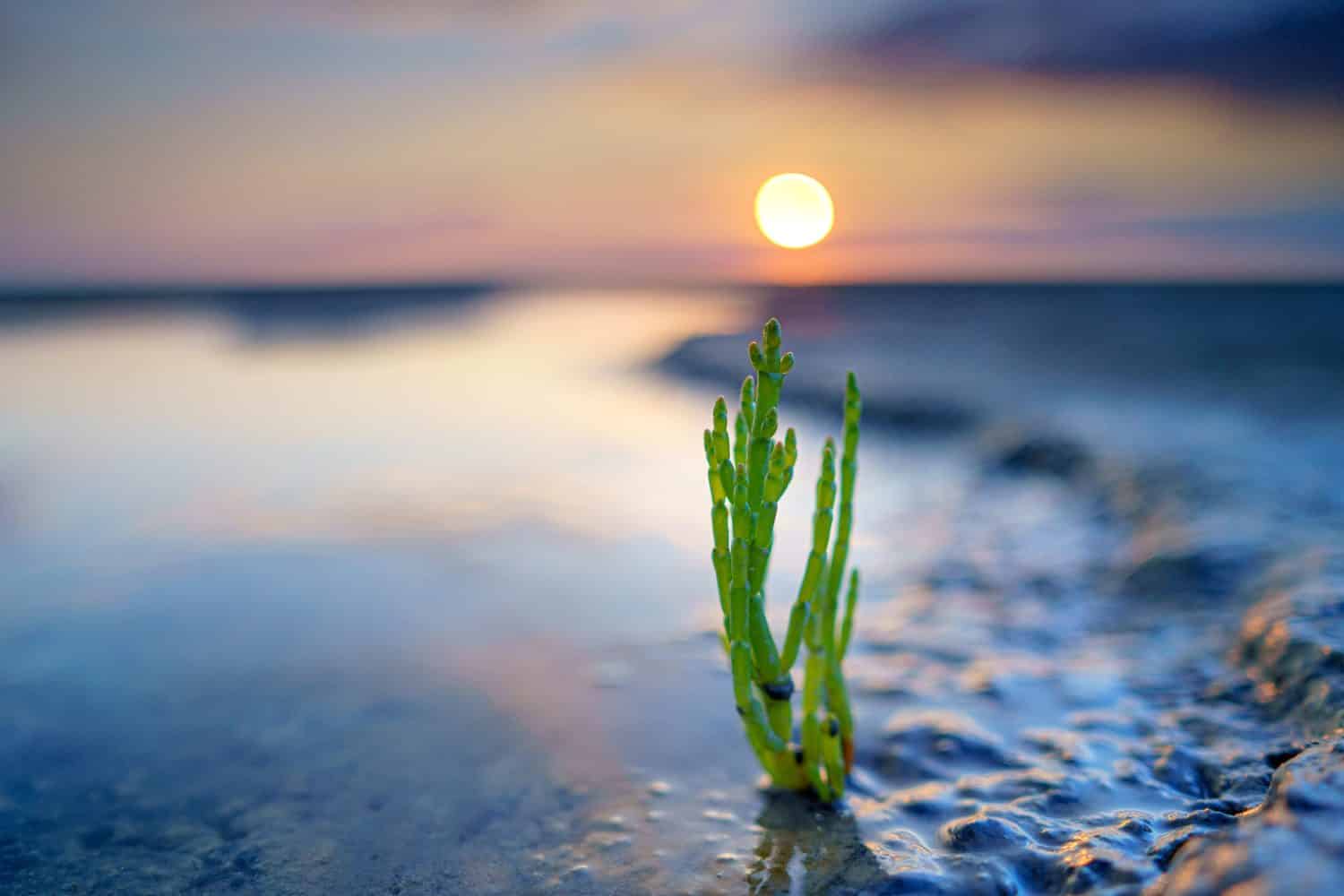
The way the leaves are arranged on the plant make sea asparagus resemble “real” asparagus.
©Wirestock Creators/Shutterstock.com
Sea asparagus is one of the plants that belong to the Salicornia genus. These succulent plants flourish along beaches and salt marshes. It’s also called sea beans or samphire greens. Sea asparagus can be erect or prostrate and have small, fleshy leaves that grow in a way that makes the stems seem jointed and look somewhat like asparagus. Some species turn red in the autumn. The vegetable is good to eat whether it’s cooked or raw, and it is, not surprisingly, excellent served with fish.
20. Sea Lettuce
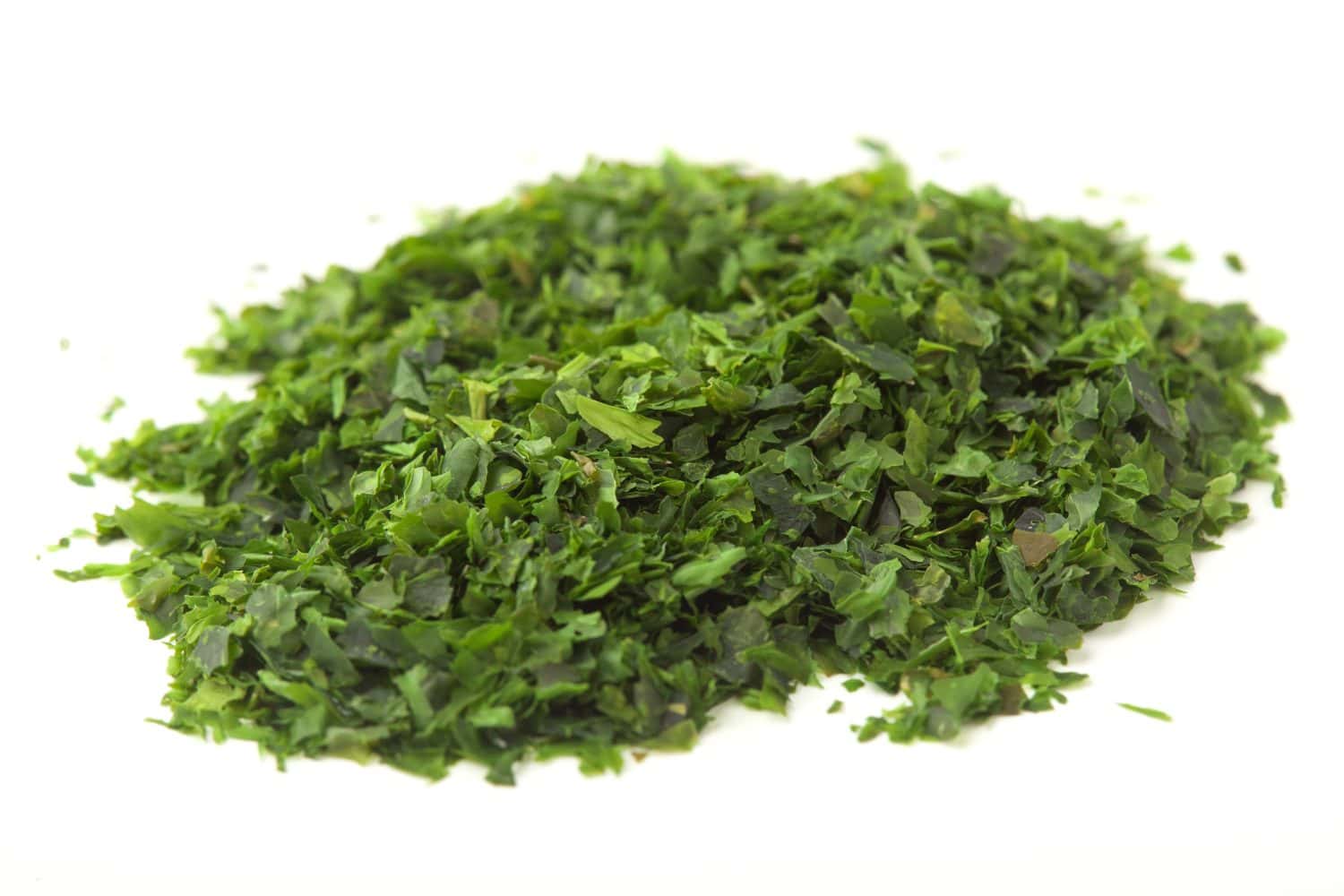
This vegetable that starts with S is a type of seaweed.
©sasazawa/Shutterstock.com
This vegetable is a species of seaweed that belongs to the Ulva genus. It’s found on seacoasts around the world. You can eat sea lettuce raw, or you can cook it in soups, and it’s even a popular seaweed to feed to aquarium fish. Ranging from light to dark green, sea lettuce has a good amount of fiber, iron, protein, potassium, magnesium, iodine, and especially calcium. It’s also rich in Vitamins A, B1, and C. However, you should be careful to learn the source of your sea lettuce, as it can grow in waters that are polluted with dangerous heavy metals.
21. Senegalia
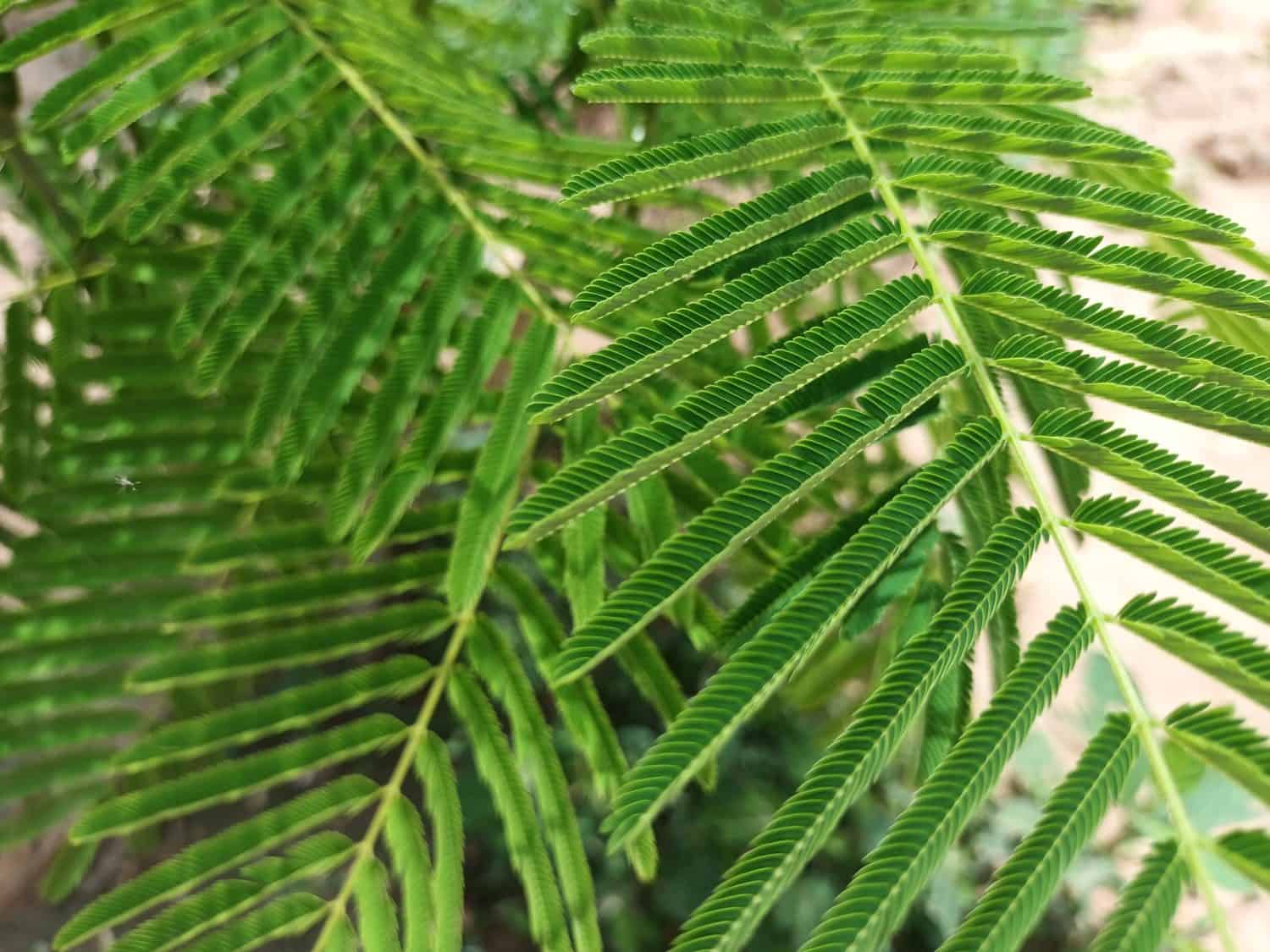
This vegetable is a member of the pea family.
©spndpatty/Shutterstock.com
Also called climbing wattle, this vegetable that starts with S is a member of the Fabaceae family and is related to peas. There are over 200 species of Senegalia, and one of the species that’s used as a vegetable is S. pennata. Native to southeast Asia, it is actually a shrub or small tree that can grow to 16 feet tall and has lovely bipinnate leaves and yellow flowers. The shoots are fried or stir-fried and added to soups, salads, and curries. S. pennata is also served alongside fish and red meat. It’s important, however, to pick the shoots before they get too tough and develop thorns.
22. Spigarello
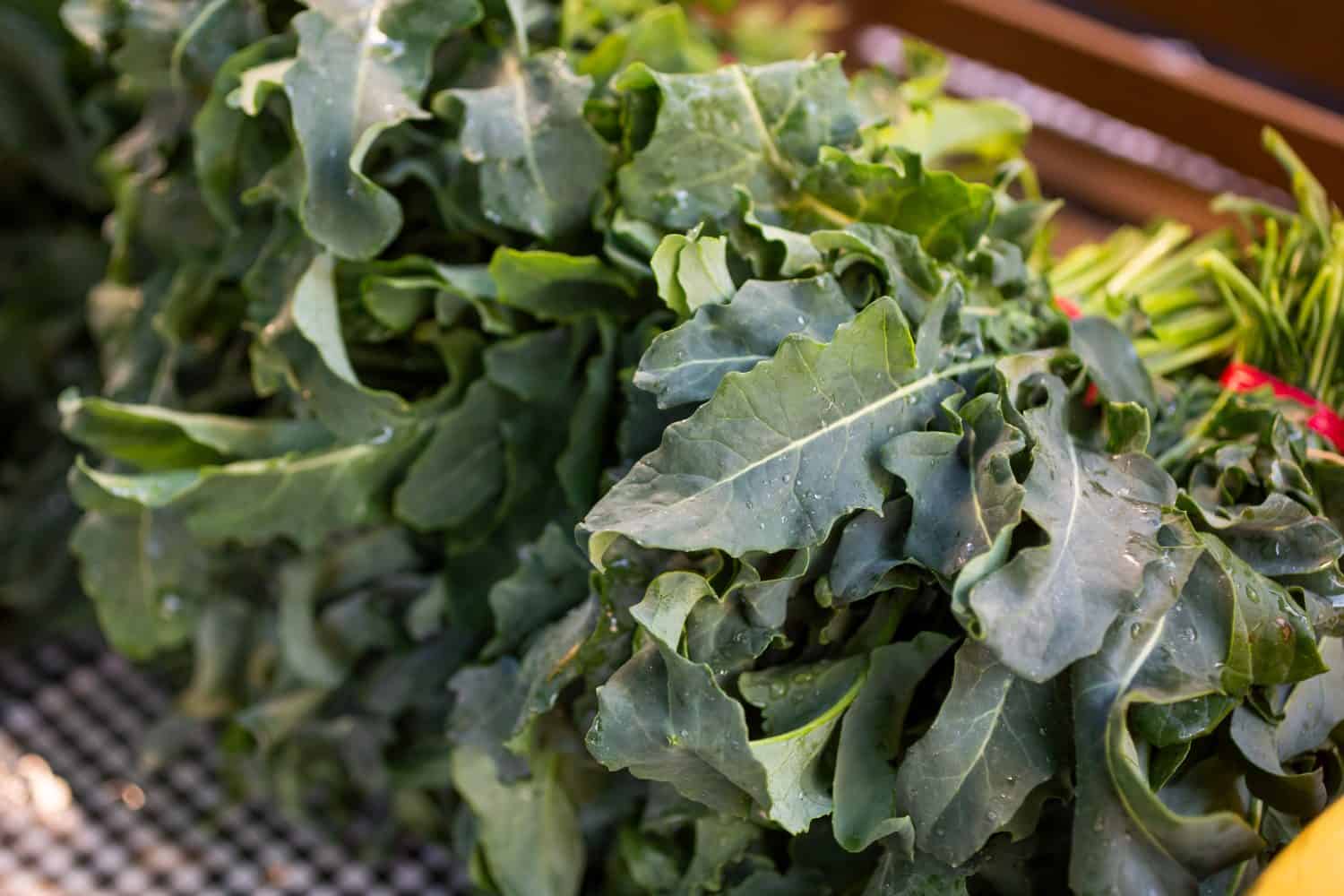
The leaves of spigarello can be flat or curly.
©The Image Party/Shutterstock.com
This unusual vegetable that starts with S is also called broccoli spigarello. Its grayish-green leaves can be curly or flat, and the stems are slender and green. They’re tender when they’re young but become too tough and woody to eat as they age. The leaves are crisp but tender and have a flavor that’s described as grassy, vegetal, with a touch of sweetness. Eat them cooked or raw. They take well to braising, steaming, and sautéing and are also chopped and tossed into salads, pasta, or soups. As a brassica, spigarello is a cool weather crop and is found mostly in winter and spring.
Spigarello is probably native to Southern Italy, where it’s been enjoyed for centuries. It is high in Vitamins C, A, K, E and B9. It’s also a good source of calcium, potassium, and manganese.
23. Sopropo
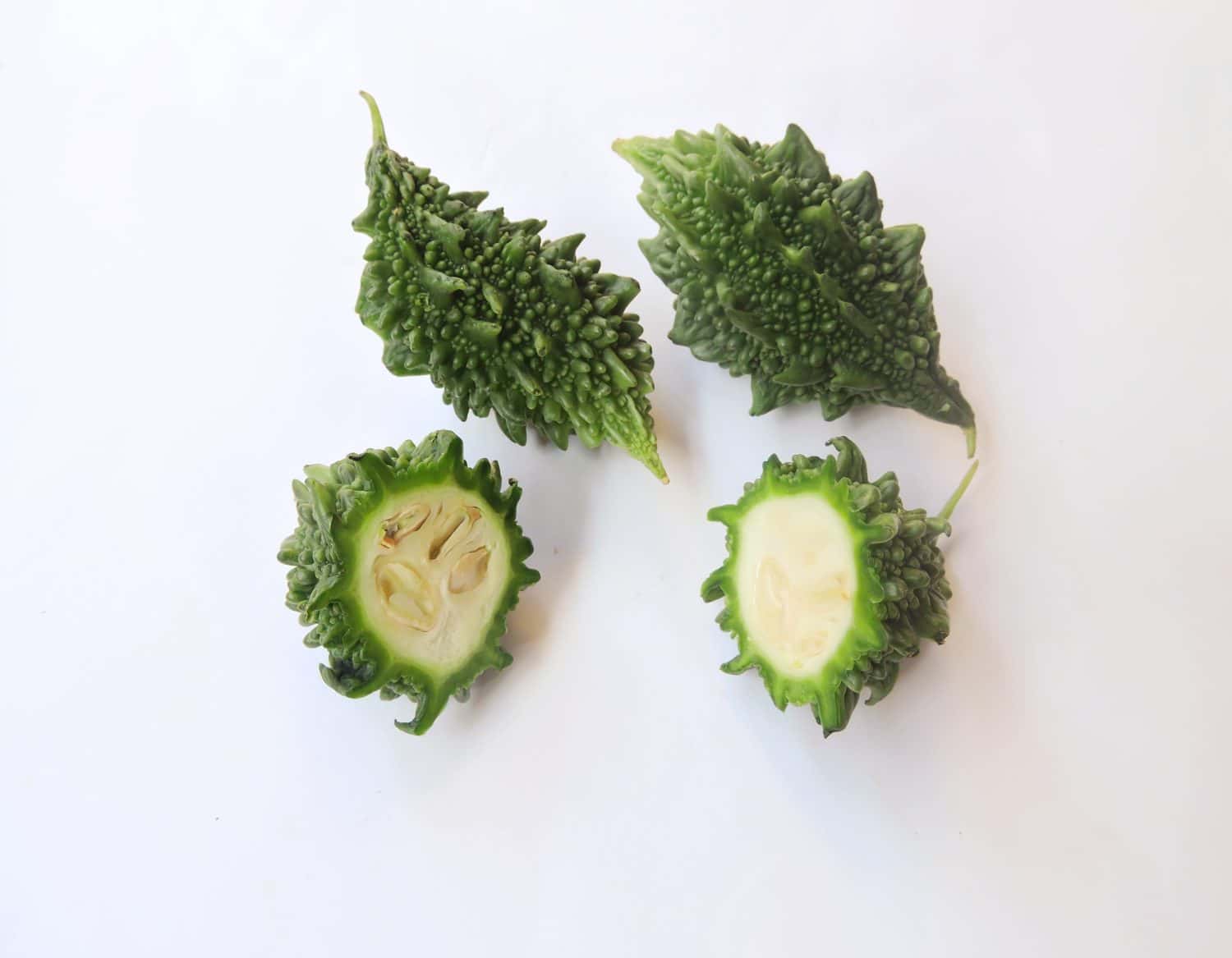
Bitter gourd is best eaten immature.
©GYAN PRATIM RAICHOUDHURY/Shutterstock.com
Sopropo Naja, or bitter gourd, has its origins in Asia but is now grown in many tropical climates. It resembles a Kirby cucumber full of bumps and warts. It is only eaten when it’s picked very young and still green or just turning yellow. At that stage, its taste is similar to a cucumber’s taste, but it still needs to be soaked to soften the bitterness.
Like the cucumber, sopropo is a fruit that is treated like a vegetable. It’s used in stir-fries and stews, or the flesh is scooped out and the husk stuffed with rice, vegetables, or meat. The shoots and leaves of sopropo are also edible and used as greens. When it’s sliced and dried, sopropo is used to make an herbal tea.
24. Shiitake Mushroom

These tasty mushrooms get their name from the shii tree where they grow.
©itchima/Shutterstock.com
Though mushrooms aren’t technically plants, edible mushrooms are used like vegetables. One of the most popular mushrooms is the shiitake, which gets its name because it grows on the shii tree. It also grows on beeches, oaks, chestnuts, poplars, and other types of trees in Asia, especially Southeast Asia. It’s not only enjoyed as food but is believed to have medicinal properties as well. Shiitake mushrooms are famous for being used in Japanese miso soups. They’re also used in stir-fries or sautéed.
Shiitake mushrooms are good sources of B vitamins, including niacin, pantothenic acid, and Vitamin B6. Much like human beings, shiitake mushrooms produce their own Vitamin D when exposed to sunlight.
Thank you for reading! Have some feedback for us? Contact the AZ Animals editorial team.








